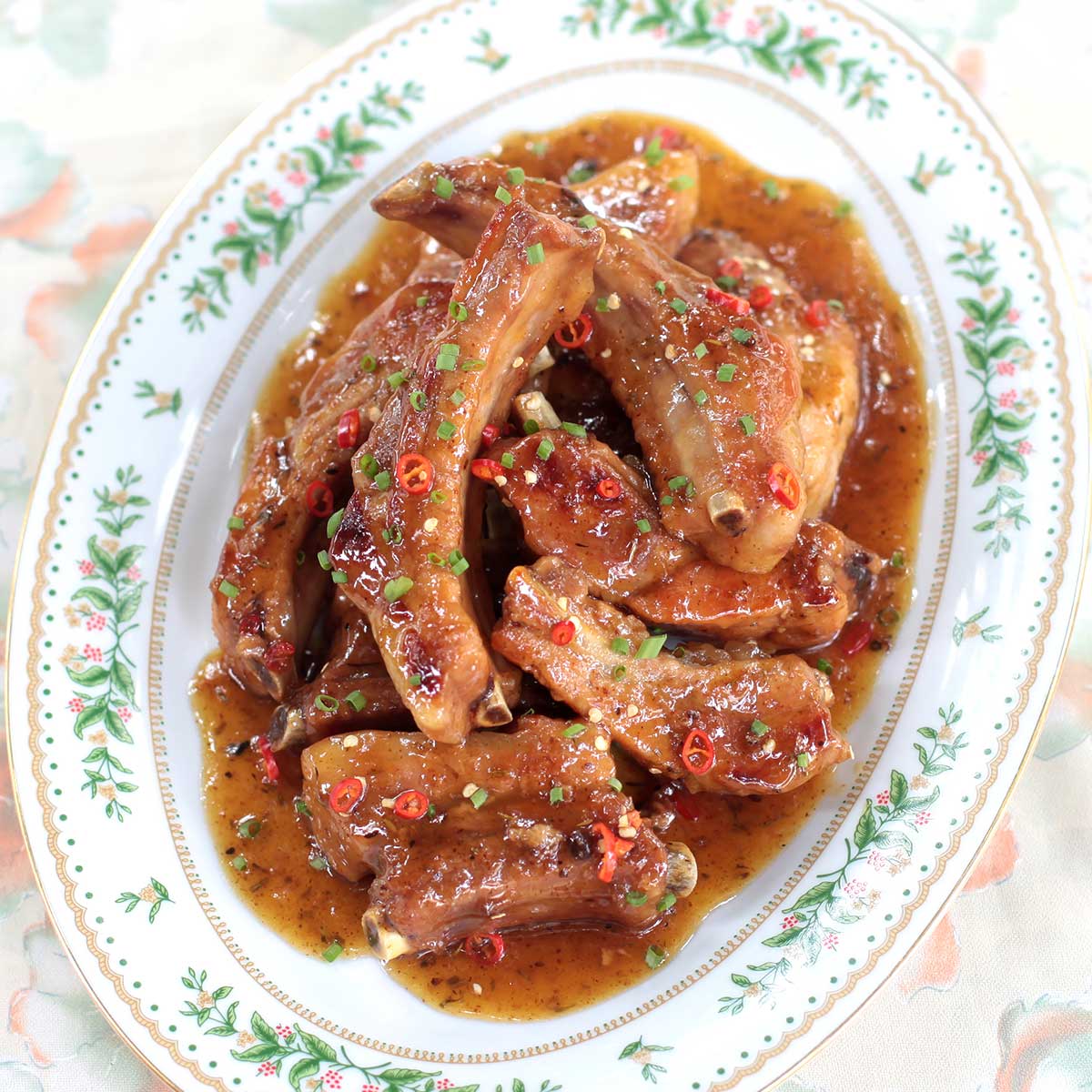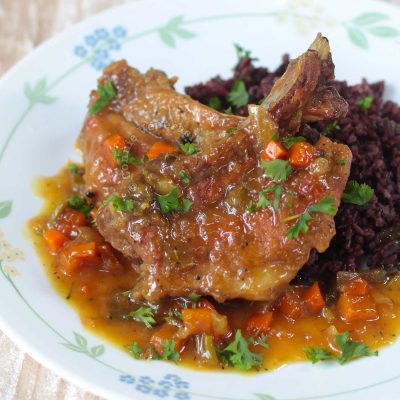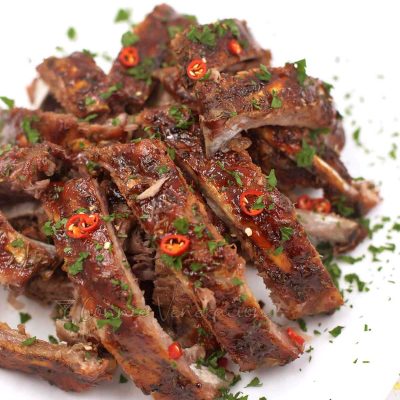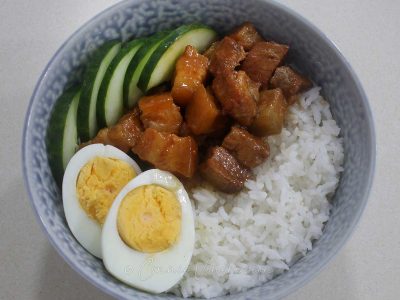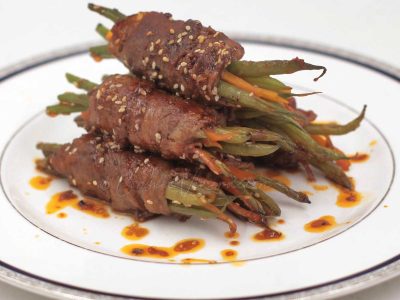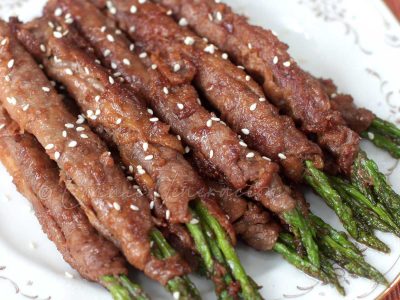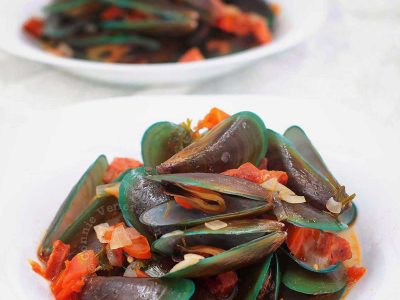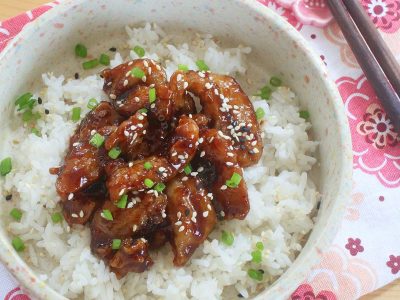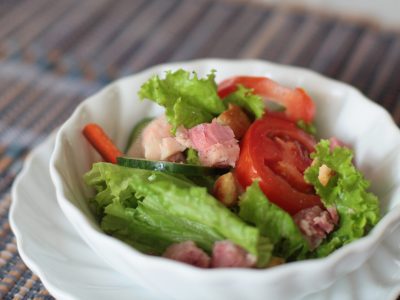I personally prefer spare ribs over baby back ribs but when the latter has enough fat to keep the meat from getting dry during cooking, I’m happy enough to switch preferences.
What’s the difference between spare ribs and baby back ribs anyway? First of all, the “baby” in baby back ribs doesn’t refer to a young animal. This pork cut has earned that name because, in comparison, the bones are shorter than those of spare ribs.
The difference in the length of the bones has to do with the part of the animal from which the ribs are taken. Baby back ribs are cut from the top part of the rib cage where the ribs and spine meet. Often, the loin is cut off from the ribs and sold separately as as loin. In some cases, however, the loin is not removed and sold as part of the ribs. An example.
Pork ribs braised in beer
Cooking meat in wine is nothing new nor unusual. But cooking in beer? Ah, you have to try pork ribs braised in beer to believe the delicious results. You can make this dish with beef or chicken too.
On the other hand, spare ribs are cut lower down the rib cage — the part that is attached to the belly. The bones are longer, there is less meat but the marbling is superb. An example.
Cajun pork spare ribs
Fall-off-the-bone tender succulent meat, this dish of Cajun pork spare ribs makes a lovely main dish for a summer meal. Perfect for the holidays too!
In this recipe, baby back ribs are used. Can spare ribs be subtituted? Of course! Whichever rib you choose to use, cut between the bones before cooking.
Honey-mustard Baby Back Ribs
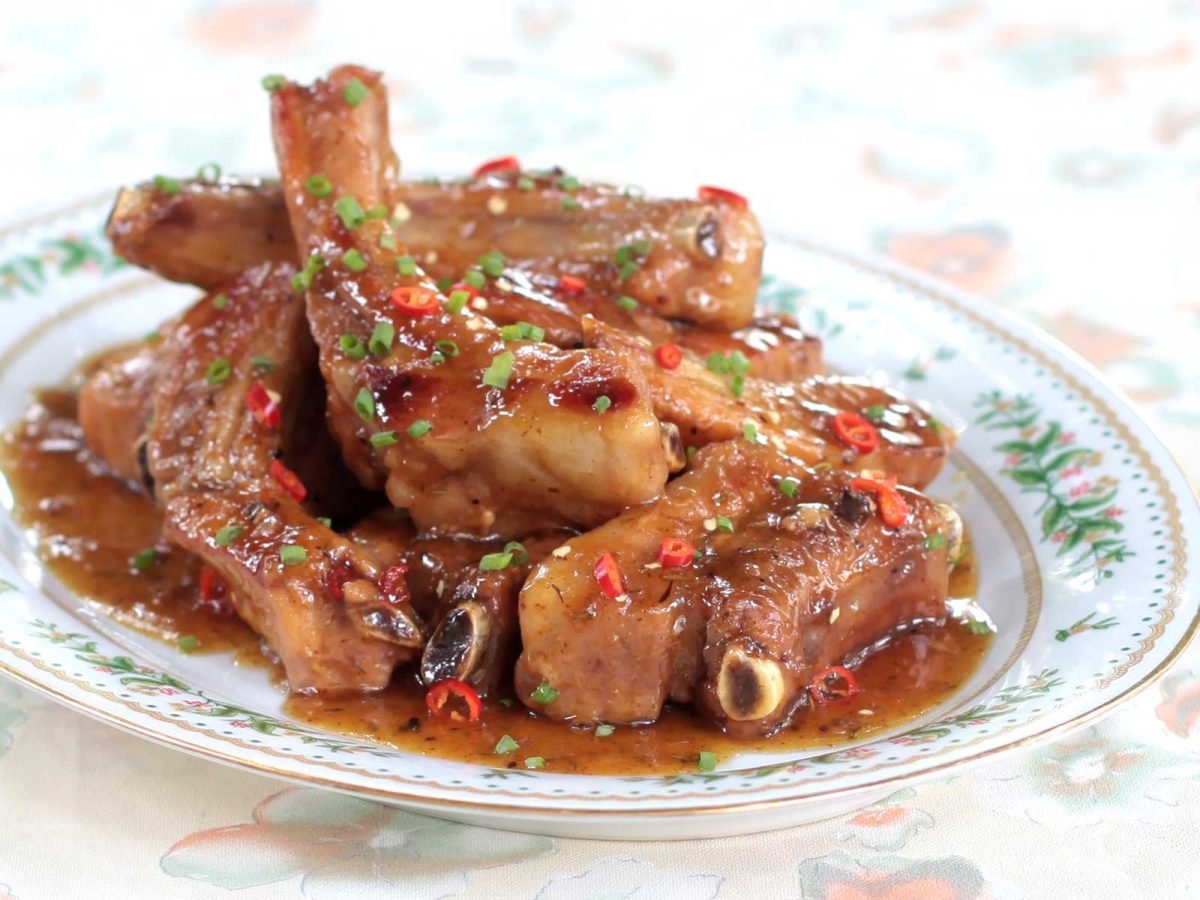
Ingredients
- 1 rack rack about 1.2 kilos
- 3 cups bone broth (you may need more)
- 1 teaspoon dried rosemary
- ¼ teaspoon dried thyme
- ¼ teaspoon ground sage
- 2 tablespoons dried onion flakes (see notes below)
- 2 bird's eye chilies finely sliced
- salt
- pepper
- ¼ cup Dijon mustard
- ¼ cup honey
- 1 generous splash balsamic vinegar
- finely sliced scallions to garnish
- finely sliced chilies to garnish
Instructions
- Rinse the rack of ribs then pat dry with a kitchen towel. Cut between the bones.
- In a heavy and wide non-stick pan, arrange the ribs in a single layer, fatty side down. Sear until the fat starts to melt and the underside is nicely browned. Give the ribs quarter turns to sear all sides.
- Pour in the broth. Sprinkle in the rosemary, thyme, sage, onion flakes, chilies, salt and pepper. How much salt and pepper you need to add depends on how well-seasoned your bone broth is.
- Bring to the boil, lower the heat, cover and braise for half an hour.
- Turn the ribs over and braise for another 20 minutes.
- Scoop out the ribs and move to a plate.
- Stir together the mustard, honey and balsamic vinegar. Pour into the pan. Swirl to blend. Boil, uncovered, for four to five minutes until thick. Turn the heat to low.
- Put the ribs back on the pan. Simmer for a minute. Flip them over and simmer for another 30 seconds.

